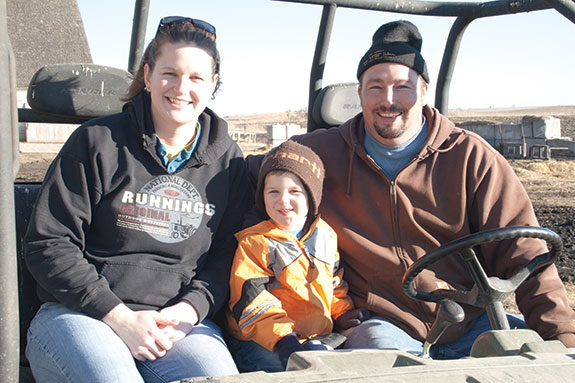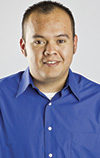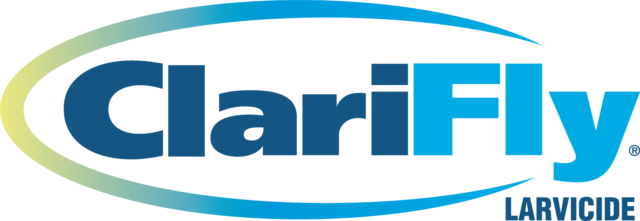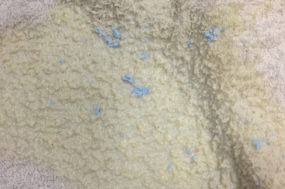Although the dairy industry has struggled for several years, there are still those who pursue a life on the farm and try to find a balance in running a successful dairy business. Seth and Kaia Darling are no different. They currently raise 575 dairy heifers on their farm near Round Lake, Minnesota.
Seth and Kaia share the day-to-day responsibilities of raising the heifers. During the daytime, Seth has a full-time job off of the farm buying hogs at a nearby livestock buying station. “I normally do chores in the morning – pushing feed, making sure all the animals are healthy and making sure none of the waterers are overflowing – things like that,” Kaia says.
When the calves arrive on the Darlings’ farm, they start at a pen on one end of the barn. The animals stair-step from one pen to another as they grow. By the time the heifers reach the opposite end of the barn, they are ready to leave the farm.
Ocheda Dairy, a nearby dairy operation, owns the heifer calves that are raised on the Darlings’ farm. The calves arrive there after they have been at a calf-raising facility from birth to weaning age or when they are 8 to 9 weeks old.
Once the heifers reach 13 months or breeding age, they then go to a breeding facility. From there, the heifers are moved to another facility, where they remain until they are four months away from calving and then return to the dairy.
The calves are started off on a pelleted starter feed. The Darlings use a feed wagon to mix and feed four different rations for the different age groups of animals. Ingredients fed include wheat straw, silage, ground corn, soybean meal and alfalfa.
Throughout the day, the heifers are fed and the feed is pushed up, the barn floor is scraped and bedding is added to the pens. Kaia explains that the barn’s pen and gate system has a 21-inch gap that allows for a bale shredder to go through the barn to add bedding when needed.
Getting a start and growing
When the Darlings first looked into building a facility to raise animals, they looked for a farm in the area. Eventually they agreed to purchase her uncle’s farm, which had been vacant for several years.
Kaia explains that she and Seth had their heifer barn built before they even had a place to live on the farm. However, in 2012, they finished up the two-year project of renovating a house (brought onto the farm) meant to become the family home.
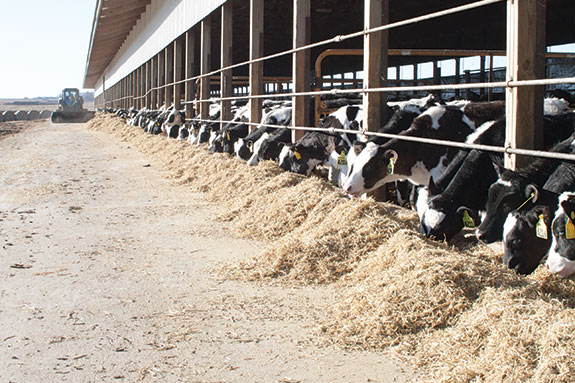
As far as the heifer barn goes, it was constructed to be 304 feet long when it was first built. The year after the heifer barn was built, 171 feet were added to the building in order to house up to 600 animals.
Because Ocheda Dairy underwent an expansion in 2012, there was a need again for more space on the Darlings’ farm to house more animals.
“We’re growing because the dairy grew and expanded cows, meaning we had to expand too,” Kaia says. “We built a 50-by-120 barn where we are going to house our little calves now.”
With the new facility, the farm can now raise an additional 220 animals for a total capacity of 820. Kaia adds that the building was once a hog barn the original owner was trying to sell and have moved off his property. “We had a crew go up and dismantle the barn and put it back up here,” she says.
Help along the way
The Darlings attribute their success on the farm to several factors. “We have a close family that helps us with chores when needed or whenever we go on a vacation,” Seth says. “Good neighbors and good family all make the world turn,” Kaia adds.
Although he has raised dairy heifers for Ocheda Dairy for the past 11 years, Seth says that working with a person like Dave Vander Kooi, the Ocheda Dairy owner, has been helpful in his heifer-raising venture.
“We wouldn’t be doing what we do without Dave,” Seth says. “When I first started, it wasn’t easy because I didn’t know a lot and he was willing to help.”
Seth explains that there is a low animal death loss rate on his farm, which he says is due to the fact that all of the animals come from one source. Between Seth and Kaia, they treat the heifers that do get sick.
“It helps that Kaia stays at home,” Seth says. “If there’s a hiccup, she’s here to help out.”
Kaia graduated from South Dakota State University with a degree in dairy production. Seth graduated with an agricultural business degree from a local community college. They agree that networking with other people involved in the industry has also been very helpful to them.
“There’s always somebody to talk to – friends, if not professors – if you have a problem,” Kaia says. “When you have a resource like SDSU, it also helps you look at ideas for new facilities and what we can do differently.”
Kaia and Seth can also count on the help of their 3-year-old son, Colby, who enjoys helping with the farm chores and being around animals. Kaia and Seth both grew up around agriculture and plan to give Colby the same upbringing.
A hopeful future
The Darlings hope to continue raising heifers for years to come and still have other ideas in mind regarding future plans, including purchasing bull calves from the dairy and feeding them out. Another goal is to have a barn similar to the first one that was built on their farm – with a few changes made to the design.
“Nothing is ever ideal because you pick out a few things and then later decide you want to change them,” Kaia says.
In addition to helping raise heifers and taking care of Colby, Kaia also keeps busy raising a flock of 77 sheep, something she did throughout college to help pay for her education.
When Kaia talks about how her family stays on top of everything, whether it’s growing the best animals possible, tending to sheep – especially during lambing season – or keeping an eye on an energetic 3-year-old, she shares a thought that helps keep them going.
“Sometimes it’s tough, but it all works out,” she says. “All you have to do is just find a balance.” PD
Photos by PD staff.

Dario Martinez
Editor
Progressive Dairyman
